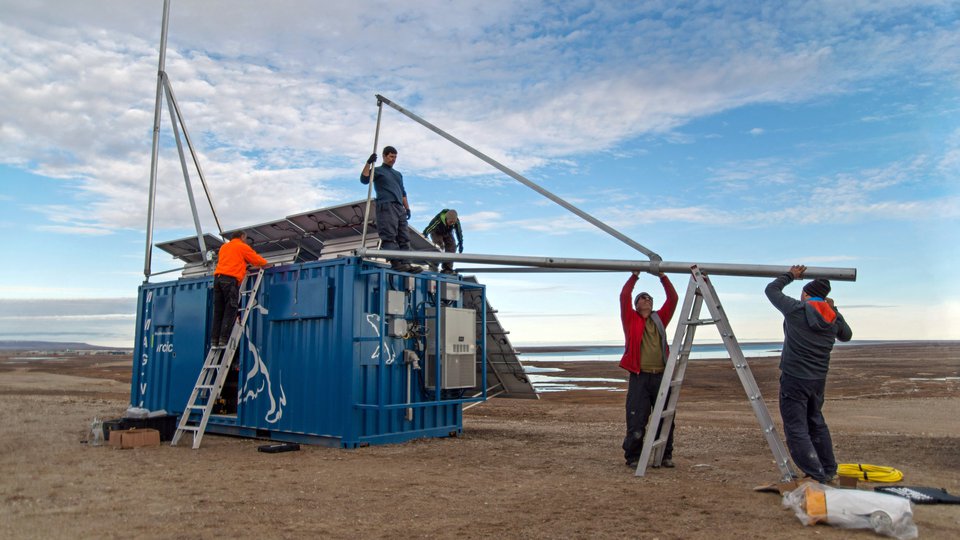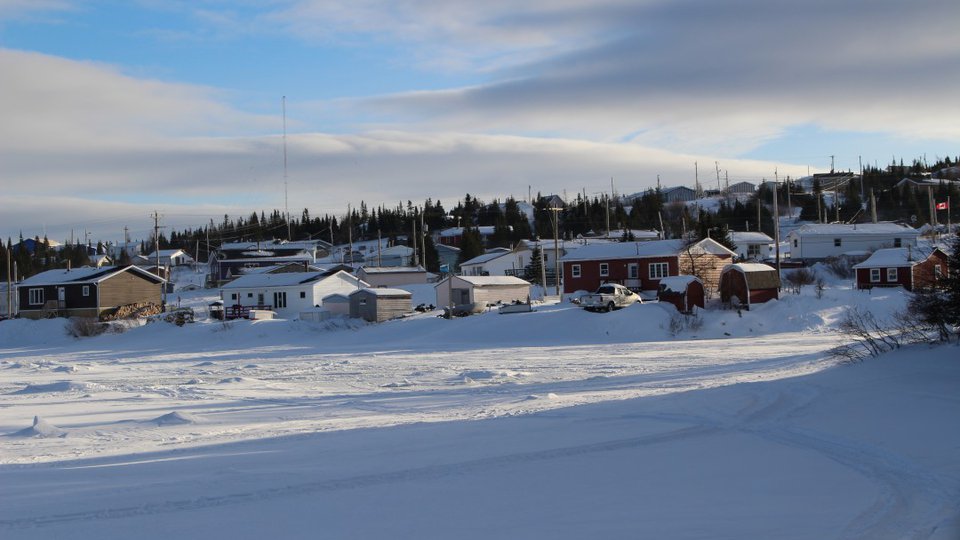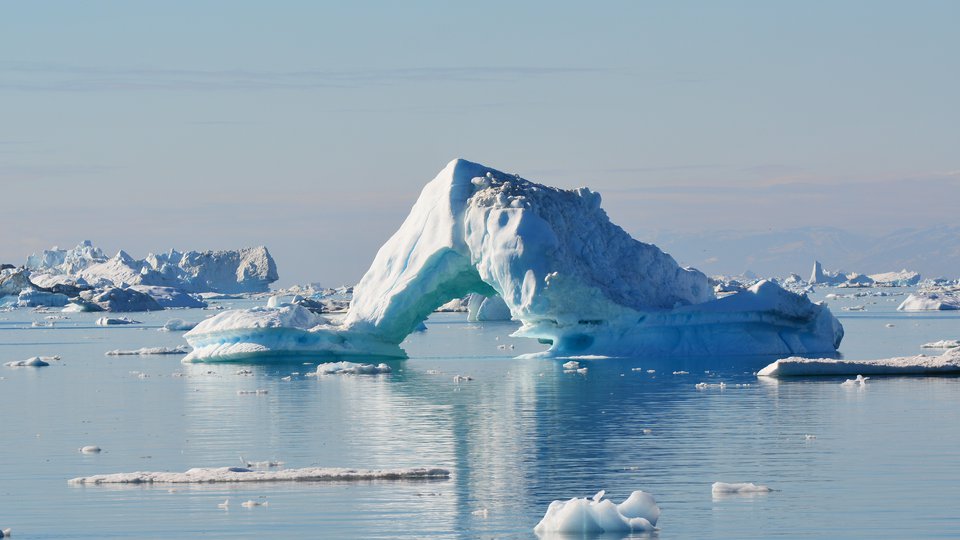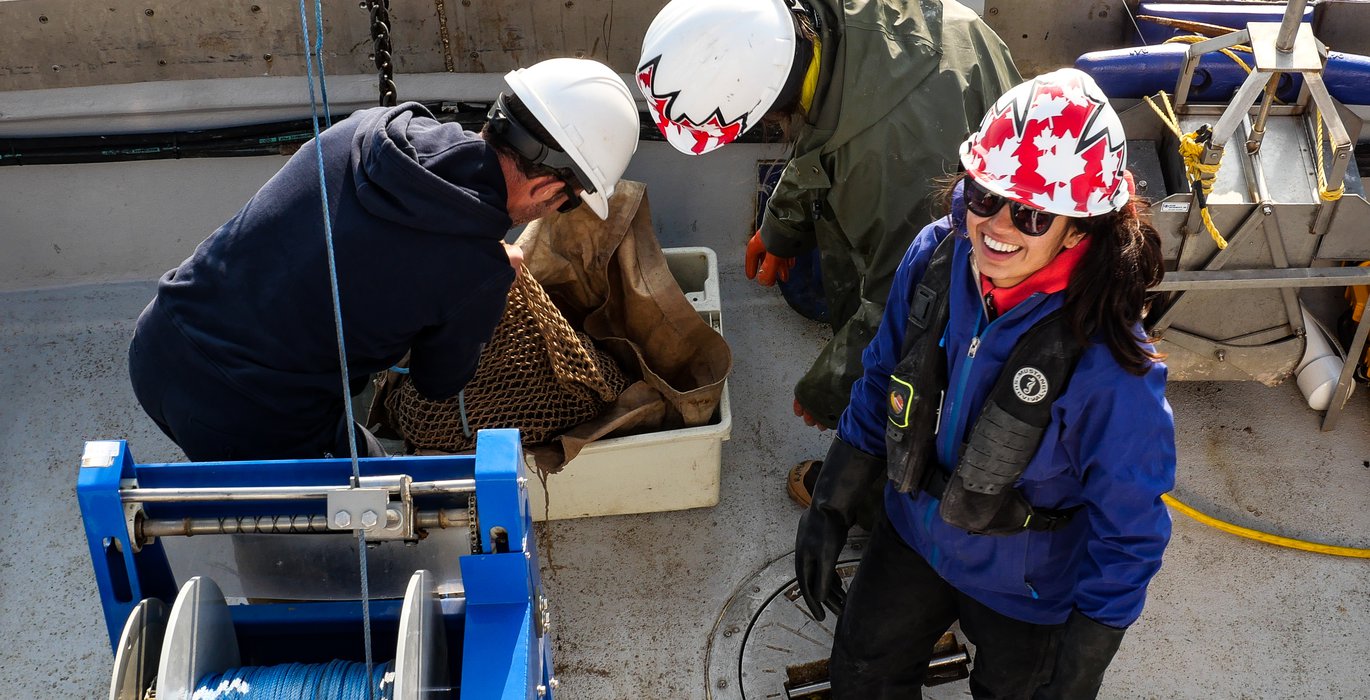
I am writing this from the bridge of the R/V Martin Bergmann, the first ship of the Arctic Research Foundation (ARF). The Bergmann, is a 62 foot repurposed fishing vessel from Newfoundland, The Bergmann sailed to Cambridge Bay, Nunavut in the summer of 2011. The mission of ARF is to support scientific research in previously unexplored regions of the Arctic Ocean with smaller, more maneuverable research vessels. With 12 berths, the Bergmann was chosen for its suitability to conduct multipurpose Arctic ocean research. Having a research platform that stayed up in Cambridge Bay throughout the winter makes it feasible to do research in places that would remain inaccessible to the larger icebreakers until later in the season. Captained by the charismatic Gerry Chidley, the Bergmann has participated in its share of Arctic voyages over recent years.
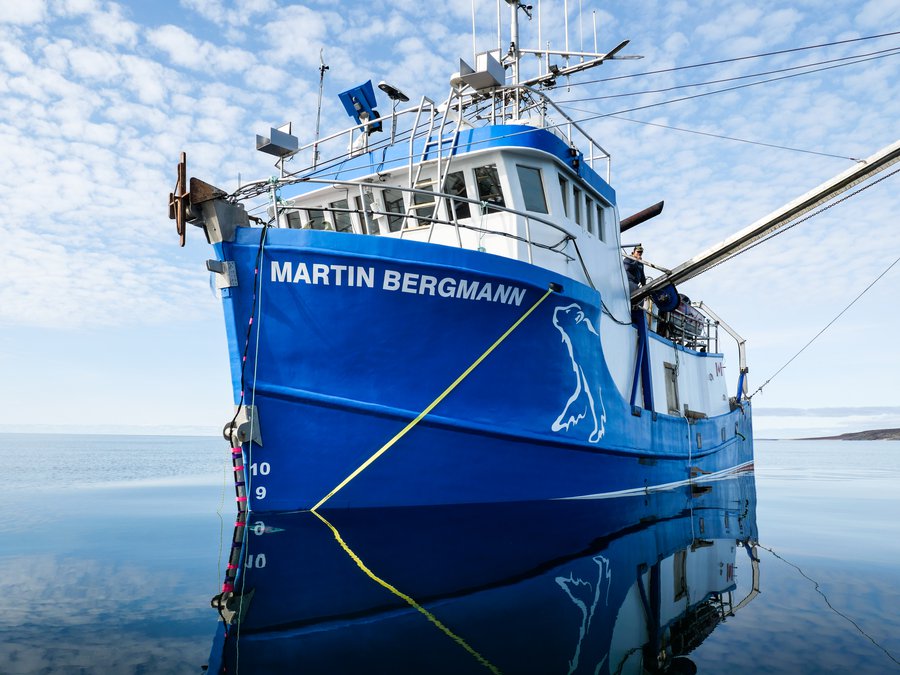
The R/V Martin Bergmann (Photo: Neha Acharya-Patel)
I am over the moon to be here on this boat on a leg of the Kitikmeot Sea Science Study (K3S). This is my first time sailing aboard a research vessel, and in the Arctic ocean no less! We set sail at 8pm from the Cambridge Bay government dock, and steamed toward Icebreaker channel on the Southeast corner of Victoria Island, a quick 14 hour journey at 7 knots. I generally am not one to get sea sick, but I was really nervous about being on a smaller boat for 7 straight days with a group of experienced scientists and the finest sailors from Atlantic Canada and not being able to hold my own (or my food). My anxiety was not eased when I was shown my bunk; right in the bow of the ship. However, much to my delight, the slaps of the water against the hull with every wave actually served as a wonderful lullaby, and I have been sleeping like a baby! We have had incredible weather and the seas have been just peachy.
Our days start with a 7am breakfast, after the 6am crew switch, and then we begin whatever task is up first on the docket. Kristina Brown, the chief scientist of the study determines our daily schedule depending upon her predetermined goals and the conditions of the day. The goal of this research leg is to study an area of hypothetically high flow called Icebreaker channel. The Kitikmeot Sea Science Study is investigating whether the “narrow gaps and straits between the many islands [of the Kitikmeot sea] are year round sites of vertical mixing, which results in polynas (holes in the sea ice) in winter, and biological hotspots in the summer.” They have been doing this since 2014. The study is through Fisheries and Oceans Canada and is supported by DFO, ARF and POLAR Knowledge Canada.
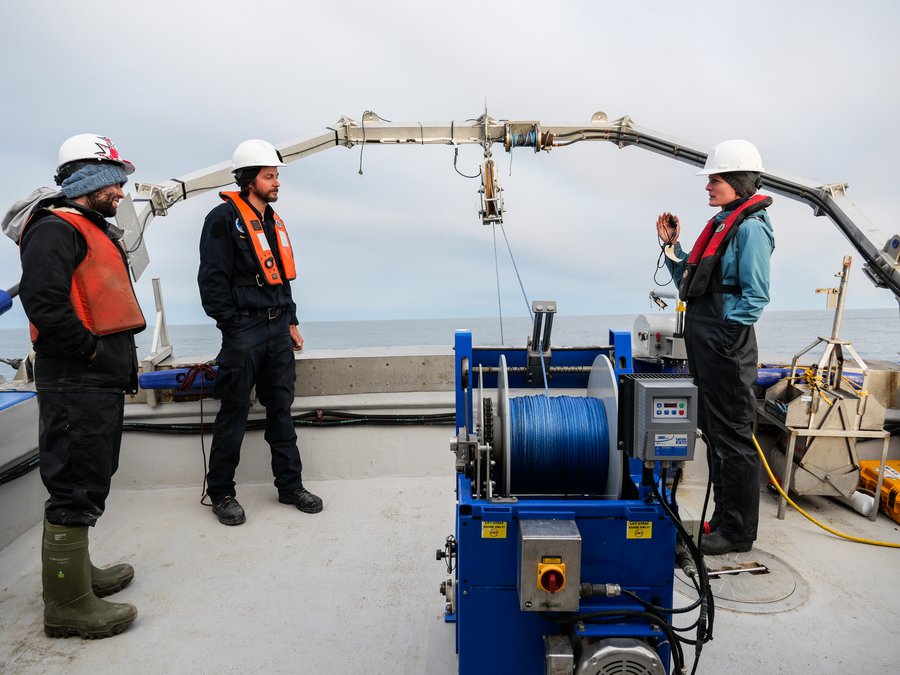
Chief scientist, Kristina Brown discussing the research schedule for the day. (Photo: Neha Acharya-Patel)
The Kitikmeot Sea is a region in the Southern Arctic Archipelago. The low productivity that is characteristic of this area is caused by low nutrient freshwater inputs and strong stratification. The stratification in this region prevents mixing between the sunlit surface water and the nutrient rich deep water below. This lack of primary productivity influences the entire ecosystem and is thought to be the reason that the top predators in the area are seals and arctic char rather than the Polar Bears and whales found in the eastern arctic. Through local observations, satellite imagery and studying the bathymetry of the area, the scientists involved have identified regions that could be areas of high mixing and therefore more productive “islands” in a generally stratified region. Bill Williams, a physical oceanographer with the Institute of Ocean Sciences and lead researcher for K3S, has used tidal models to predict the flow in these areas of interest and we are here to see whether these predictions could be true, and if so to understand their far – reaching implications.
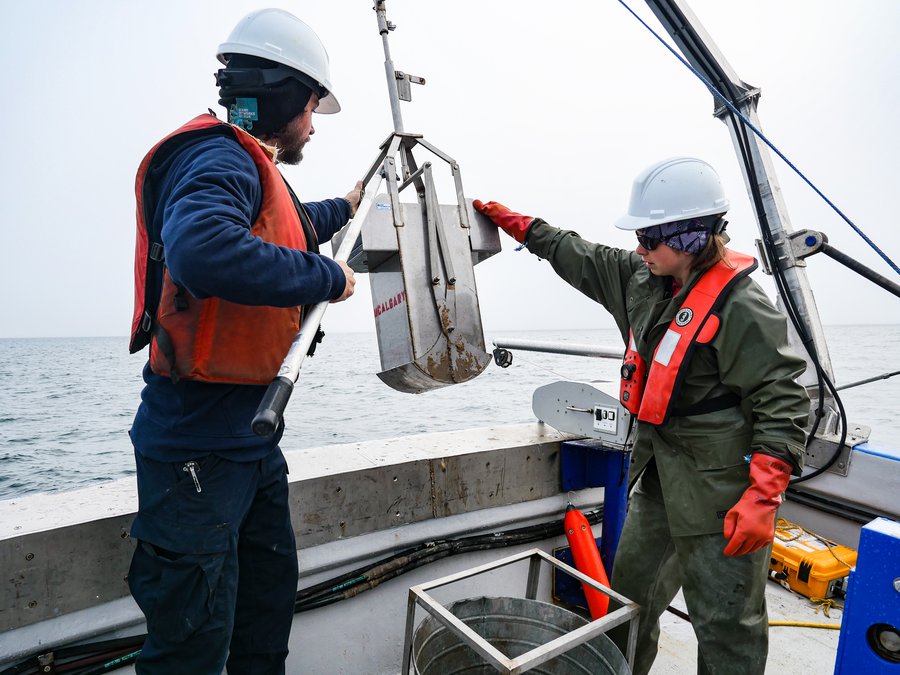
Raphaelle Descoteaux deloys a box core to collect samples from the sea floor. (Photo: Neha Acharya-Patel)
I don’t have a strong background in oceanography but with everything going on onboard I am sure starting to feel like an oceanographer! We have been doing Rosette casts, zooplankton tows, and underway CTDs multiple times every day. These observational techniques help to understand what is going on in the water column, and are quite fun to be honest. The Rosette collects water from different depths, and is subsampled for many different analyses by bottles of all shapes and sizes. The underway CTD (which stands for it’s measured parameters of Conductivity, Temperature, Pressure) is a cool instrument which generates salinity and temperature profiles whilst the ship is moving. Another interesting underway device onboard is the underway pCO2 system maintained by Rich Sims from the University of Calgary, it continuously measures surface dissolved carbon dioxide, temperature, salinity, dissolved oxygen and fluorescence These parameters can serve as predictors for primary production. This brings me to the complementary biology going on here as well.
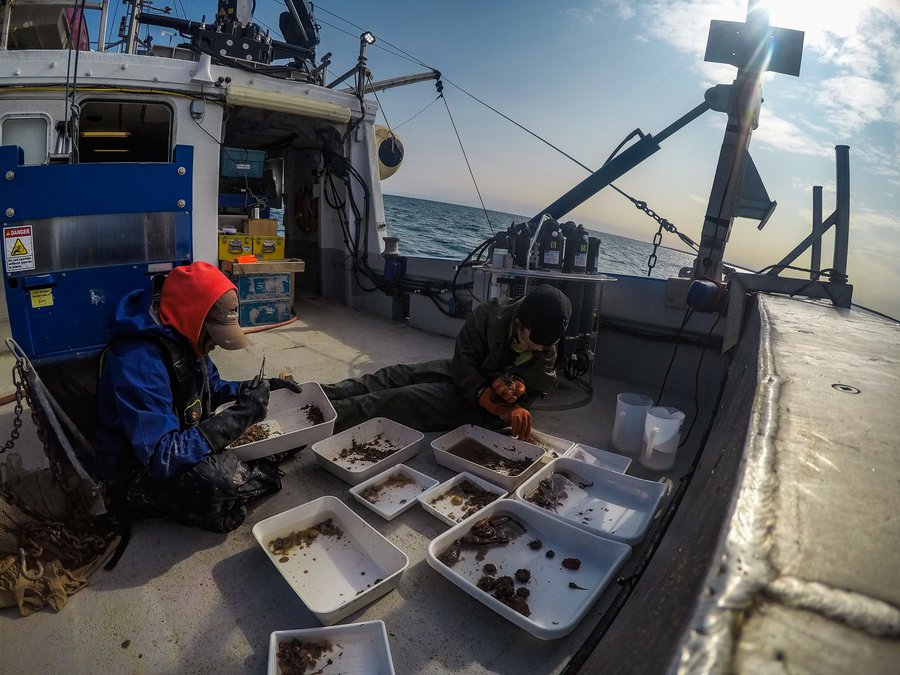
Researchers sort and identify the different organisms collected on the back deck of the R/V Martin Bergmann. (Photo: Neha Acharya-Patel)
More in line with my training and background, Raphaelle Descoteaux a benthic ecologist from the Universite I Tromso from Norway is here to look at the life on the sea floor. The pairing of the oceanographic data with these samples can determine relationships between hypothetical primary productivity and secondary productivity. Using a cabled camera system we do camera transects of the ocean floor in areas corresponding to oceanographic sampling. This has to be done at a very slow speed, otherwise all we see is a blur of what maybe could have been a sea star or two. So, the captain turns off the engine and we drift along in the Kitikmeot sea dragging the camera behind us, and taking a photo of the sea floor every ten seconds. We can also see a live feed from the camera on the boat and depending on the bottom substrate we see – rocky or sandy- Raphaelle decides whether we should take a dredge or a box core respectively from the area. Once we get the bottom sample, the day is spent sorting and identifying the different organisms that come up from the ever-surprising sea floor. Raphaelle then dissects and samples the animals for mercury content, stable isotopes and DNA barcoding to add them to the ever-growing Barcode of Life Database
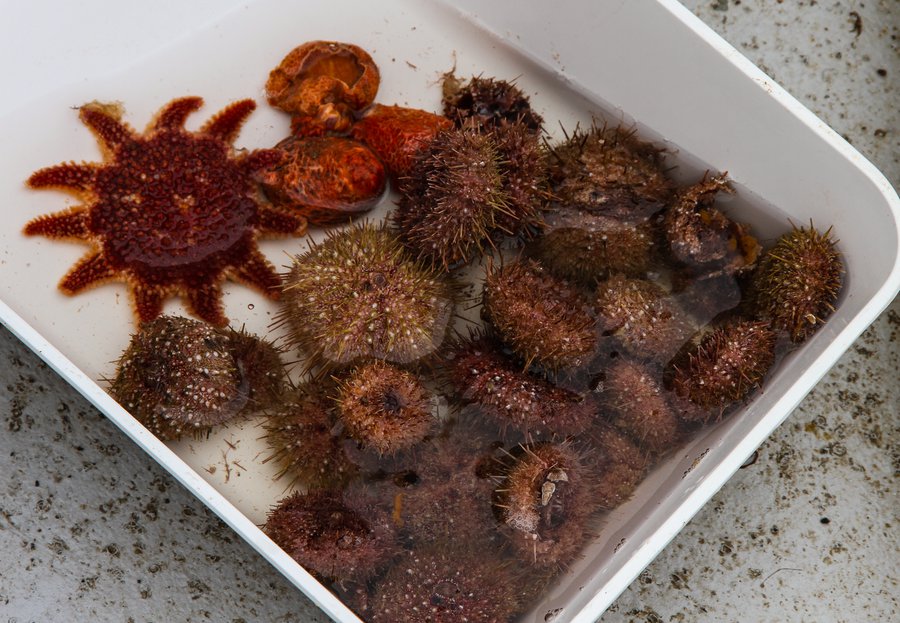
Organisms collected are disected for mercury content stable isotopes and DNA barcoding. (Photo: Neha Acharya-Patel)
In terms of the collaborative study, from a biological perspective the stable isotope sampling is arguably the most important. Through this, we can find out what the existing animals in the area are eating, and where their nutrients are coming from. Thus we can check whether the hypothetical physical models can predict the chemical composition of an area and the subsequent life that could potentially be there. As this project continues and more regions are explored with this goal in mind a more comprehensive picture of the Kitikmeot Sea will come into focus.
In the meantime, these research cruises on the Bergmann in the Northwest passage are loads of fun, and lots of work! . A vessel of this size requires people who are jacks of all trade. They are all engineers, deck hands, bridge crew and honorary scientists that can get the job done by any means. With this relatively small, and highly skilled crew the voyage has been really efficient and the flow of work and energy has remained high! Once I disembark, the group will continue sampling other places for the next two weeks. I am really grateful to Kristina Brown and the Arctic Research Foundation for inviting me along on this journey. It is incredibly exhilarating to know we are floating around and sampling parts of the ocean that have never before been studied in this way. The Arctic Ocean is a fascinating place that is undoubtedly going through change.
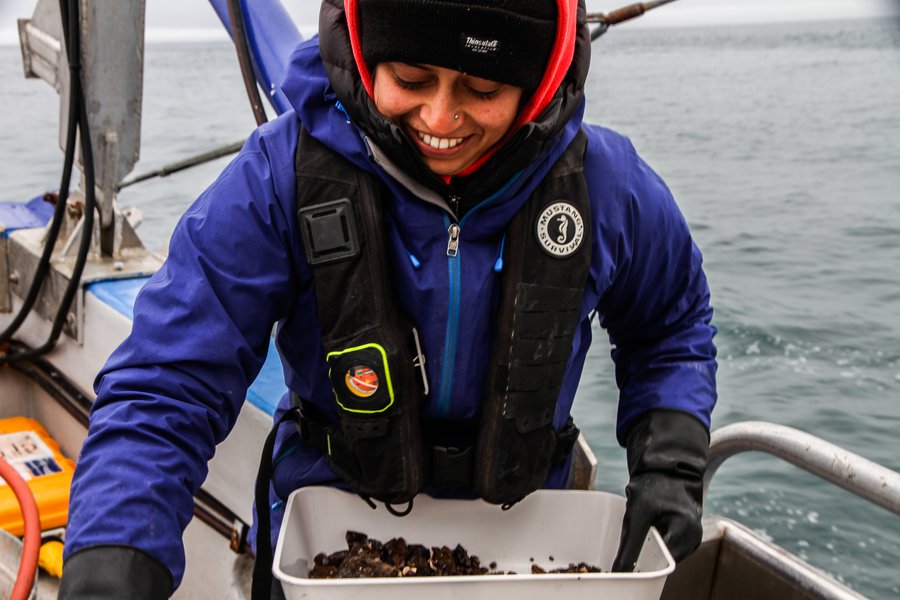
This blog was written by the 2019 North American Rolex Scholar: Neha Acharya – Patel. The Rolex Scholarship is a program for a young person aspiring for a career in a diving or ocean related field. It allows the individual to travel and work with different professionals based off their interests with the goal of gaining multidisciplinary experience that can help them in their pursuit of a life path. Please check out the blog to follow her experiences throughout the year, and if interested in applying look into the Our World Underwater Scholarship Society.
